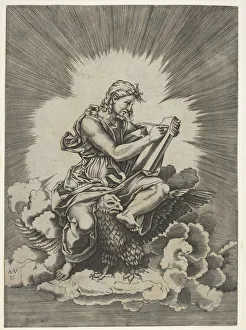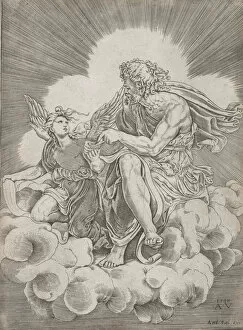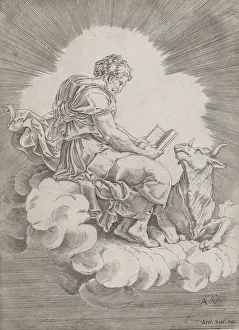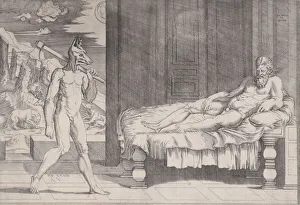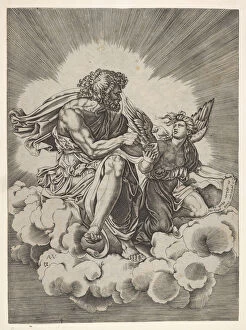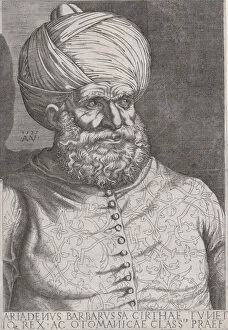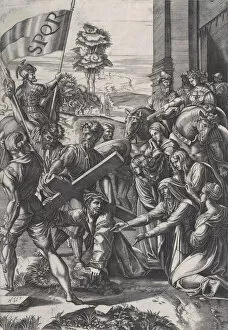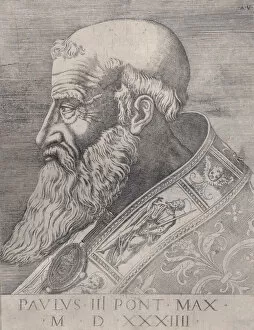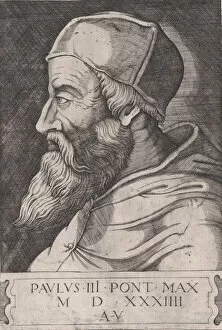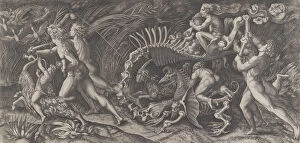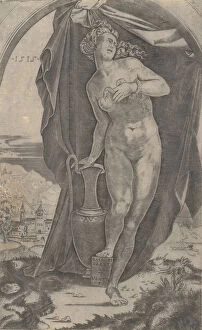Agostino De Musi Collection
Agostino de Musi, also known as Agostino Veneziano, was a renowned Italian engraver and printmaker during the Renaissance period
All Professionally Made to Order for Quick Shipping
Agostino de Musi, also known as Agostino Veneziano, was a renowned Italian engraver and printmaker during the Renaissance period. His exceptional talent is evident in his various works, including religious subjects and mythological scenes. One of his notable creations is the depiction of St. John, seated with utmost concentration, holding a writing instrument to a tablet. The attention to detail is remarkable as an eagle with outstretched wings stands beside him symbolizing divine inspiration. In another masterpiece dated 1518, Agostino portrays Saint Matthew in all his glory. The intricate lines and delicate shading bring this saint to life on paper. Similarly, Saint Luke's portrayal by Agostino in 1518 showcases the artist's mastery over capturing expressions and emotions through engravings. Saint Mark is not left behind as Agostino immortalizes him in yet another stunning artwork from 1518. The precision of each stroke highlights the artist's dedication to perfection. Agostino's skills extend beyond religious themes; he explores other subjects such as mythology and classical tales. One example is "Lycaon Transformed into a Wolf" from 1524 - a captivating representation of Greek mythology that demonstrates Agostino's versatility as an artist. "The Body of Christ Supported by Three Angels, " created in 1516, displays Agostino's ability to convey spiritual concepts through visual artistry. The ethereal scene depicts angels tenderly supporting Jesus' body while evoking profound emotions within viewers. Among his anonymous works lies an ornamental panel dating back to ca. 1514-1600—a testament to Agostino's influence even when uncredited for his artistic contributions. Another intriguing piece attributed anonymously but believed to be crafted by Agostino himself captures a soldier attaching his breeches to his breastplate—an illustration that reflects both military strength and attention to minute details prevalent throughout Renaissance artistry.

